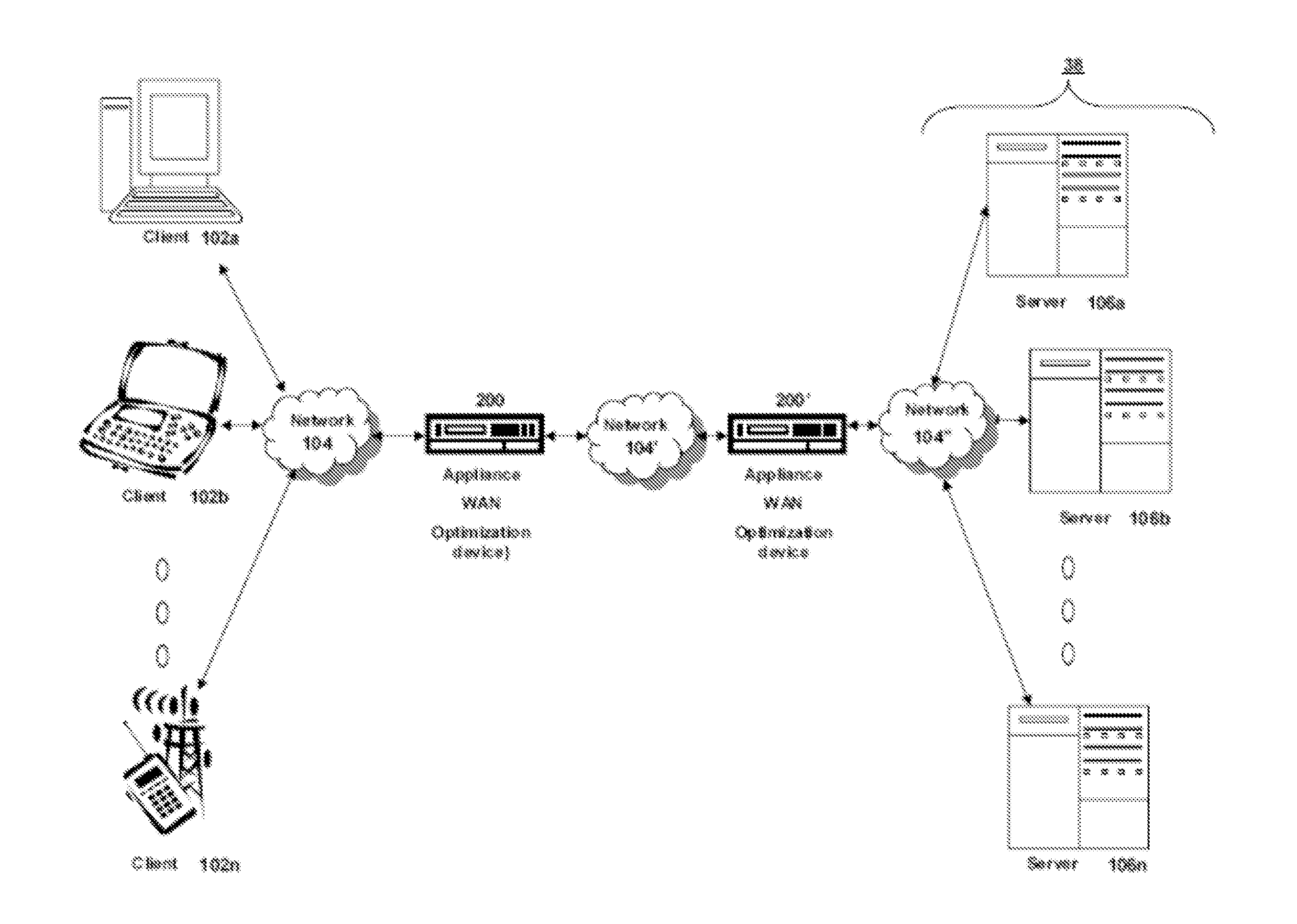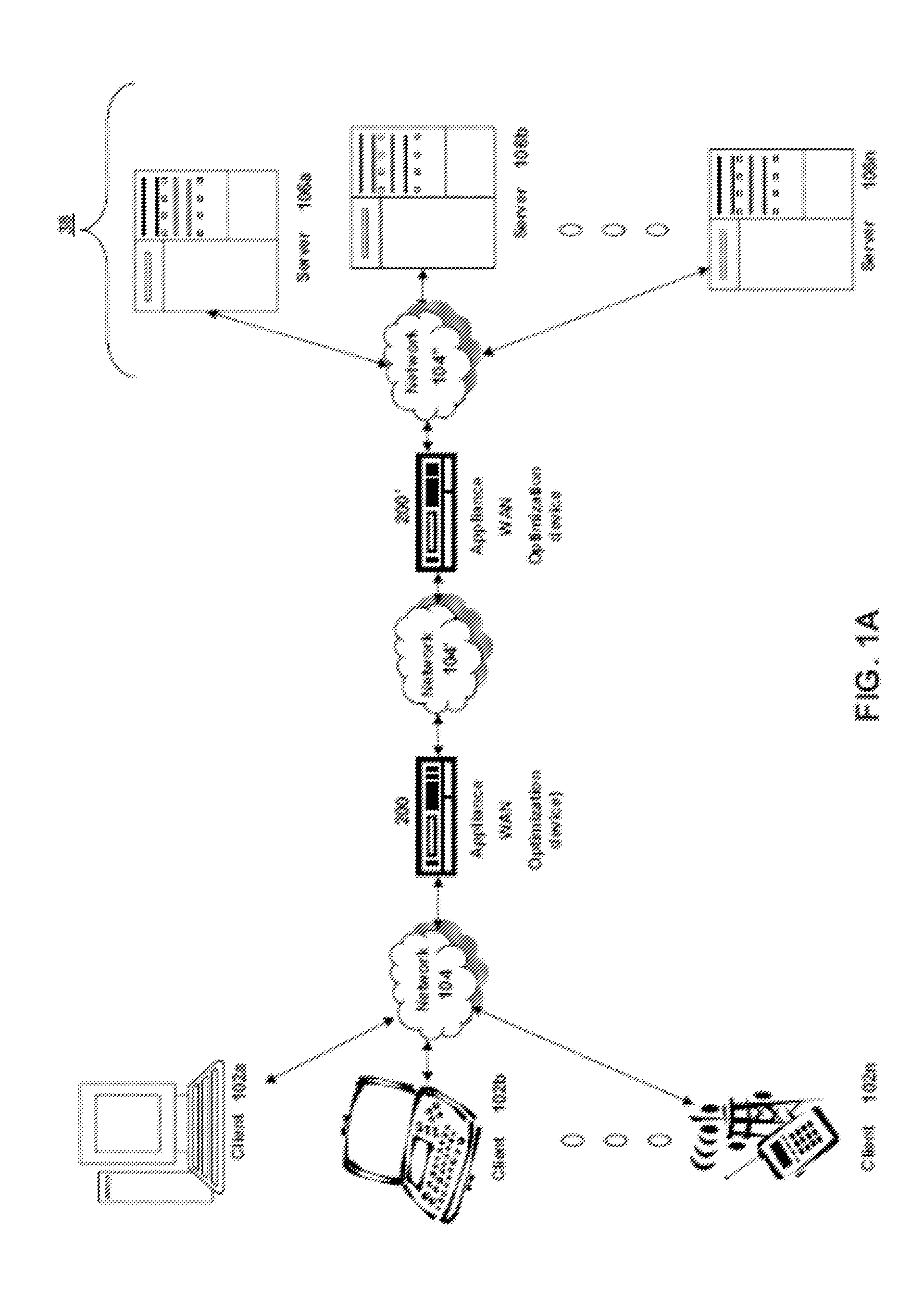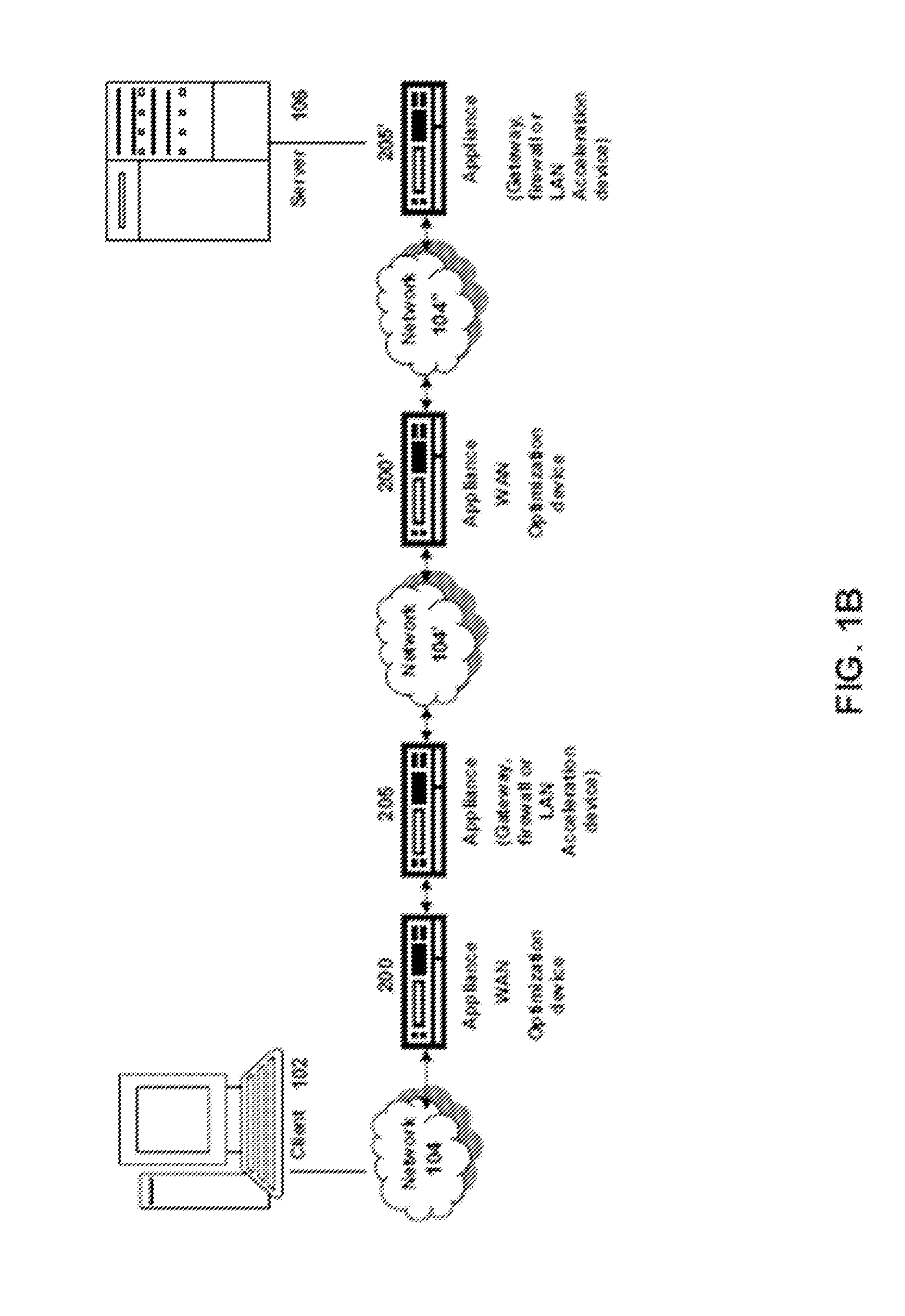Prioritizing classes of network traffic to provide a predetermined quality of service
- Summary
- Abstract
- Description
- Claims
- Application Information
AI Technical Summary
Benefits of technology
Problems solved by technology
Method used
Image
Examples
example 1
[0323]A traffic shaping engine receives data packets obtained by an optimizing appliance. The traffic shaping engine reviews a DSCP mark or other identifying mark on the packets' payload to determine a QoS or class associated with the network packet. Upon determining a QoS and subsequently whether the data packet belongs to a “minimum-latency” traffic class, the traffic shaping engine sorts the queue into traffic identified as requiring a “minimum-latency” and traffic identified as not requiring a “minimum-latency.” For example, VoIP packets transmitted by an enterprise exchange are tagged as “minimum-latency” while VoIP packets transmitted by SKYPE are tagged as “non-minimum-latency.”Upon sorting the queue into “minimum-latency” and “non-minimum latency” traffic, the traffic shaping engine further sorts the queue segments by a timestamp value associated with each data packet. In some instances, the sort uses a first-in-first-out (FIFO) method of placing those packets with the oldes...
example 2
[0324]In one example, audio of a multimedia stream can be transmitted on a separate stream having a high QoS or high service priority level. Each sub-stream can be prioritized according to a priority level determined by the application that generates the data or the data type of the data. An appliance executing a network optimization engine that provides WAN optimization can be used to auto-detect applications that require minimum-latency transmission. Upon automatically detecting these applications and thereby the data generated by these applications, the network optimization engine can provision a separate TCP stream that can be used to deliver the data over a network channel according to a high priority or enhanced QoS. For example, the appliance can provision a separate TCP stream to transmit audio data at a high priority service level. This audio data can be extracted from multimedia data subsequent to identifying that the multimedia data requires a high service level. In some ...
PUM
 Login to View More
Login to View More Abstract
Description
Claims
Application Information
 Login to View More
Login to View More - R&D
- Intellectual Property
- Life Sciences
- Materials
- Tech Scout
- Unparalleled Data Quality
- Higher Quality Content
- 60% Fewer Hallucinations
Browse by: Latest US Patents, China's latest patents, Technical Efficacy Thesaurus, Application Domain, Technology Topic, Popular Technical Reports.
© 2025 PatSnap. All rights reserved.Legal|Privacy policy|Modern Slavery Act Transparency Statement|Sitemap|About US| Contact US: help@patsnap.com



